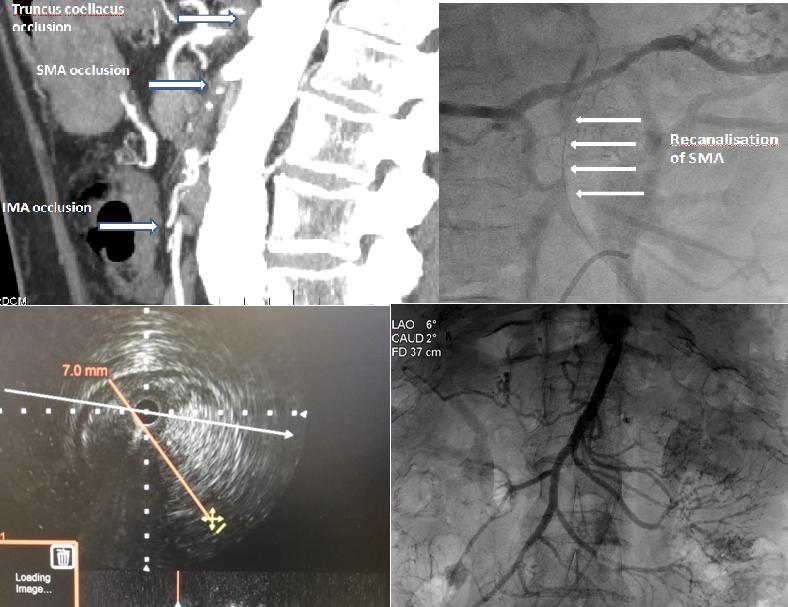Lots of interesting abstracts and cases were submitted for TCTAP & AP VALVES 2020 Virtual. Below are accepted ones after thoroughly reviewed by our official reviewers. Don¡¯t miss the opportunity to explore your knowledge and interact with authors as well as virtual participants by sharing your opinion!
* The E-Science Station is well-optimized for PC.
We highly recommend you use a desktop computer or laptop to browse E-posters.
ABS20191028_0007
| Peripheral Vascular Disease and Intervention | |
| Transcatheter Treatment of Acute Thrombosis and Embolism of Superior Mesenteric Artery | |
| Dmitriy Vladimirovich Ovcharenko1, Kirill Alexeevich Smirnov1, Andrei Aleksandrovich Voronkov1, Alexey Biryukov1 | |
| Pavlov First Saint Petersburg State Medical University, Russian Federation1 | |
|
Background:
Acute occlusion of the superior mesenteric artery (OMI) is a life-threatening condition that can lead to intestinal necrosis with a poor prognosis for the patient. Despite modern technical achievements, the incidence of AMI has gradually increased in recent years. Over the past decades, the mortality rate from AMI remains quite high (from 60% to 90%), which is associated with its non-pathognomonic symptoms. In recent years, several studies have reported the use of endovascular revascularization in the treatment of AMI with rapid restoration of blood supply and are relatively small amount of intervention, due to the preservation of a larger volume of viable intestines. In very few studies it has been shown that endovascular treatment resulted in significantly less bowel resection, which contributed to a decrease in the incidence of short bowel syndrome and mortality, compared with the results of open surgery. However, the question of whether endovascular intervention therapy should be the main method of treating AMI is still debatable. Early diagnosis and timely surgical intervention is the cornerstone of modern treatment and is important for reducing high mortality, and the emergence of new endovascular approaches in parallel with modern imaging methods can provide new ways and opportunities for the treatment of this pathology.
|
|
|
Methods:
We retrospectively analyzed 5 patients who underwent transcatether treatment acute thrombosis and embolism of superior mesenteric artery. 3 patients (60%) were male, 2were female (40%). The median time before the intervention from MSCT was 243 minutes. The main symptoms were abdominal pain (n=3), visible bloating (n=2), nausea(n=3).
|
|
|
Results:
Technical success was achieved in 100 percent of cases: after the use of a thromboaspiratory catheter with or without stenting, blood flow was restored completely. Clinical success was achieved in 3 patients. In 2 patients after laparoscopy cases are considered incurable due to total intestinal damage. In other cases, a complete regression of symptoms and pronounced positive dynamics were registered. In the case where the cause of AMI was an embolism, an aspiration catheter was used. After embolectomy, vascular patency was fully restored. Due to the absence of atherosclerotic lesions of the visceral pool arteries, stenting was not required. Thromboaspiration, balloon angioplasty and implantation of balloon-expandable stents in the zone of residual stenosis with complete restoration of blood flow were also performed in patients with SMA thrombosis with the background of critical atherosclerotic SMA lesion (n=2) and in patients with SMA bypass thrombosis. In the remaining two patients, due to the progression of the clinic, the increase in pressure in the abdominal cavity, direct stenting of the affected areas of the SMA was performed. 2 diagnostic laparoscopy was performed to assess bowel damage.
  |
|
|
Conclusion:
Percutaneous treatment is useful method of treatment acute thrombosis and embolism of superior mesenteric artery and it can be proposed as a first-line treatment.
|
|